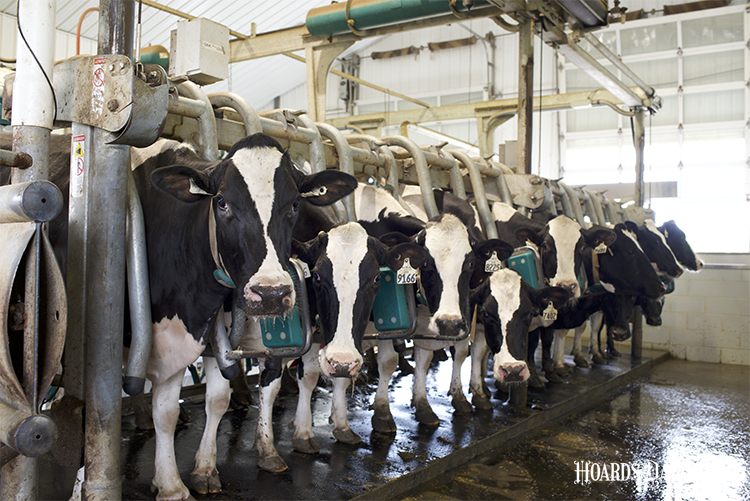
Sometimes people wish there were more hours in a day to complete the responsibilities at hand, and dairy cows may feel the same way. Rick Grant of the Miner Institute recommends that farmers think about how their cows spend their day and strive to maximize the time available for important tasks like eating and resting.
“Time budgeting is not a new concept or a complicated concept,” said the president of the Miner Institute during a Penn State “Economic benefits of improved cow comfort” webinar. “But for cows, time is money.”
He said that cows need to spend about 70% of their day eating and resting. “We have to get that right,” he emphasized.
If cows are eating four to five hours a day and resting 12 to 14 hours, that does not leave much time for other cow-related tasks, such as milking, drinking, grooming, and idling about the barn.
“We can’t escape that there are 24 hours in a day; we can’t change that,” he said. “A cow also has circadian rhythms that drive her behavioral patterns throughout the day.”
During his graduate studies, Grant looked at feeding time, intake, rumination, and lying time of freestall and tie stall herds. Although feeding behavior changes depending on the housing situation, the amount of time spent on these tasks was similar for both freestall and tie stall housed cows.
“A cow is a cow, and it has similar behavioral needs regardless of where it is housed,” he said.
Time becomes more limited in situations where cows need to leave their pen to be milked in a parlor, for example. Grant advised that cows can only be outside of the pen and away from resources for about 3.5 to 4 hours per day, at the most. For lame cows, research indicates that number might be two hours or less.
“Lame cows really can’t afford to be out of the pen for very long,” he noted. “Otherwise, they just spiral down and will probably leave the herd.”
Grant said farmers should know how many hours their cows are outside of the home pen because this is so critical for the cow.
“If this isn’t right, anything else we do will improve things, but we won’t realize the full economic value of it if every day she is fighting a constraint on her time budget,” he said. “She has to carve out extra time from eating or resting, neither of which is good for the cow.”
With this time budget in mind, it is in the cow and the farmer’s best interest to provide an environment that allows cows to “do cow things,” Grant advised.
“There is no excuse for not optimizing bunk management and stall comfort. You have to maximize both if you are trying to optimize the profitability of your operation,” he concluded.








